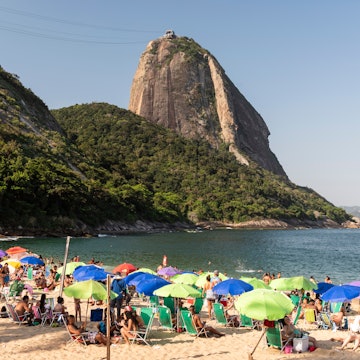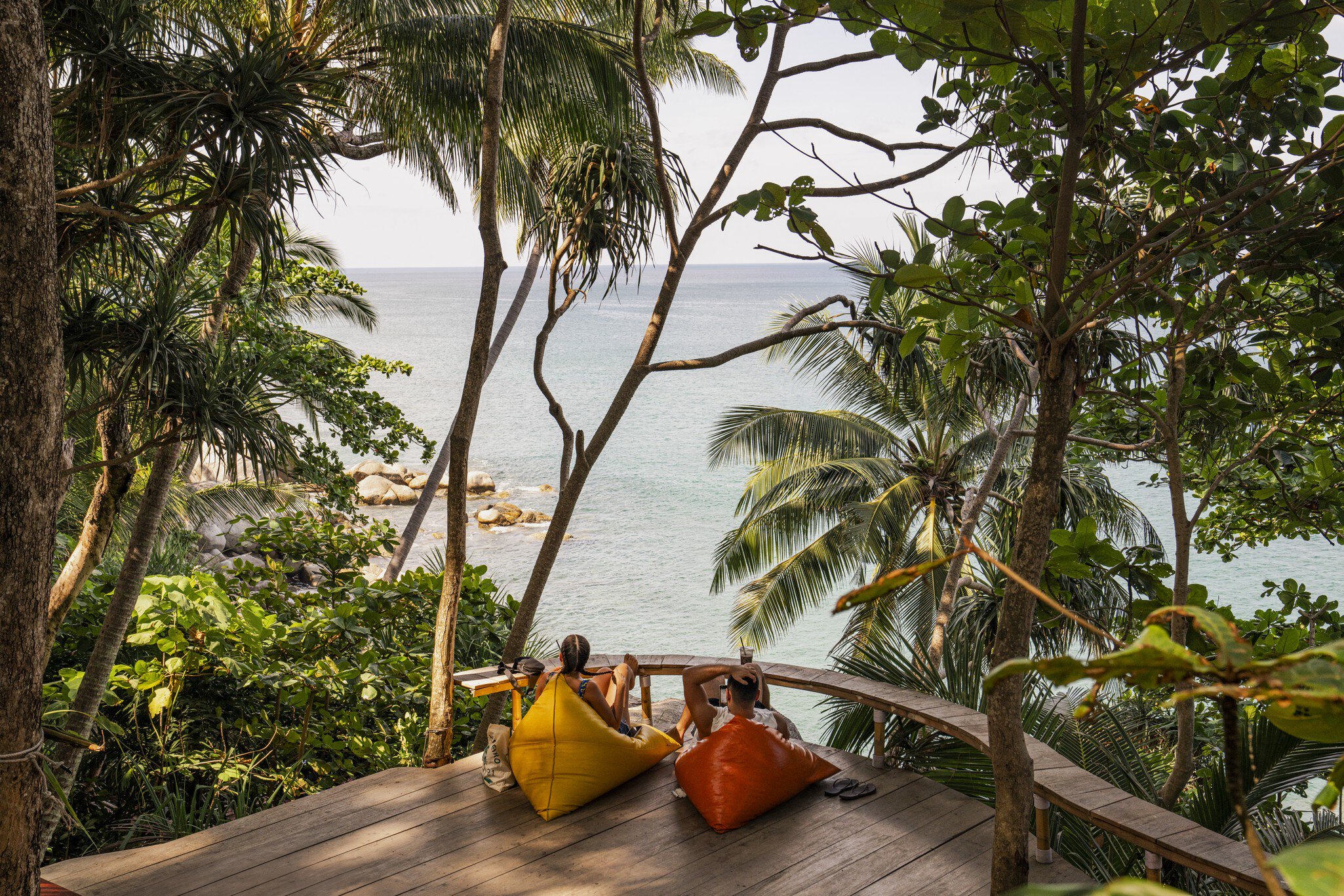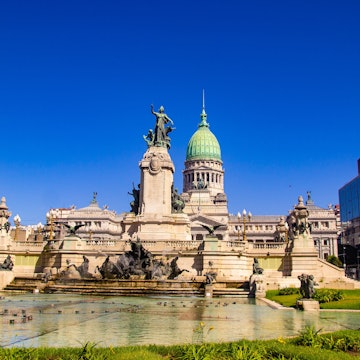

Tango from the Caminito neighborhood in Buenos Aires. Luis War/Shutterstock
Tango is one of the great cultural symbols of Argentina. Born in Buenos Aires and Montevideo, itโs both a musical style and a dance, recognized around the world for its elegance and sensuality.
There are many ways to experience tango in Buenos Aires; whether you just want to enjoy the live music, watch tango shows or participate in the traditional milongas where locals and visitors mix for a night of dance, hereโs our guide to tango in Buenos Aires.

Get familiar with Tango music
Tango is a musical style whose orchestration typically features the ฒ๚ฒนฒิปๅดวฒิฑ๐รณฒิ (a handheld, melancholic-sounding concertina played by pressing buttons as its bellows open and close) as its centerpiece, giving it its unique, nostalgic atmosphere, over which singers tell stories of love and longing.
Watching an orchestra play tango is a great spectacle. The orchestra often performs classics from the golden era, when tango greats like Carlos Gardel, Anรญbal Troilo and Roberto Goyeneche reigned.
Enjoy a night of tango at , a venue located in Abasto, one of the most historic neighborhoods of tango culture. Most of the concerts held on this stage are tango, though other styles sometimes slip in, so check the program before booking.
For a somewhat less โstructuredโ experience, visit , a small and picturesque bar frozen in time, where every night tango musicians stop by to sing a few songs in exchange for applause and busking.
This place is tiny and informal, and it is common for tables to be shared by strangers. Itโs definitely one of the most authentic tango experiences in the city, where you will find not only travelers but also locals passionate about the culture.
is another venue where some of the cityโs best musicians of this style perform. The space offers a full range of tango experiences: live music, dance shows, milongas that fill the floor with couples, and even beginner tango lessons on the first steps to the traditional 2x4 beat.

See how the pros do it
To see tango at its finest, head to a live show. These typically feature a live orchestra performing classics by masters like Roberto Goyeneche, Anรญbal Troilo, and Osvaldo Pugliese, while professional dance couples execute their routines with athletic precision, filling the stage with grace and personality.
Tango shows are often quite theatrical, with striking and rehearsed choreography. They are usually set in the first half of the 20th century, tangoโs golden age.
The shows are mainly aimed at tourists, typically including a demonstration of gaucho folklore, which is less about the city but offers a taste of Argentine traditions from the interior.
Most performances are staged in dinner theater venues, though you can buy a ticket just for the show. Menus include regional dishes such as steak, empanadas and other delicacies, accompanied by a glass of Malbec, Argentinaโs world-famous wine.
The traditional is situated in the historic San Telmo neighborhood, on a corner where two ancient cobblestone streets, Estados Unidos and Balcarce, intersect.
Bar Sur first opened its doors in 1967 and offers visitors the opportunity, besides enjoying its traditional show and indulging in Argentine cuisine, to take dance lessons and learn the basics of tango. You can attend this show with a reservation from Monday to Saturday at 8:30pm.
One of the most well-known tango shows in Buenos Aires is the one held at . The building once functioned as a warehouse during the 18th century and today is an intimate venue to admire expert tango dancers. Book your table in advance to secure a good spot to enjoy the show.
If youโre interested in learning about the history of tango, offers a daily show that explores the genreโs evolution through four acts; from its early days in immigrant slums, to the rise of legend Carlos Gardel (1917โ1935), the golden age of halls and milongas in the mid-20th century, and finally the modern interpretations that keep tango alive today.

Step onto the dancefloor
There's no tango experience more genuine than the one found in the milongas. This is where people traditionally experienced tango in the old days: an orchestra, a dance floor and strangers inviting each other to dance.
You can join in or simply watch, but visit a milonga to discover the place where todayโs tango scene truly lives.
is one of the most typical spaces where tangueros go out to dance and enjoy the music they love so much.
Located in the popular Palermo neighborhood, this venue is open on Wednesdays, Fridays and Sundays, and offers tango classes an hour before the start of its classic milongas.
On Wednesdays and Sundays, classes start at 10pm, while on Fridays they start at 9:45pm. This is one of the cityโs most genuine tango experiences, where the crowd is mainly made up of passionate dancers, not tourists.
It is customary for strangers to invite each other to dance, so donโt be surprised if someone asks you to join them on the floor โ though it is also okay to politely decline.
Join the free, open-air milonga that takes place every day at the , a beautiful octagonal shelter located in a public park in the Belgrano neighborhood.
Started more than 20 years ago by Raรบl Marcelo Salas, a tango enthusiast determined to show the dance was still alive in the city, this milonga has grown into a daily event where, at times, more than 250 people have danced simultaneously.
Drop by at 7pm Monday through Friday for a lesson, followed by dancing at 8pm. On weekends, classes run for two hours starting at 5pm, leading into the milonga from 7pm onward.
For a bohemian late-night option, head to the Almagro neighborhood and follow the crowd from to , a cavernous space that usually gets going around midnight. Classes are often advertised by word of mouth, adding to the underground feel.

Plan with a local












